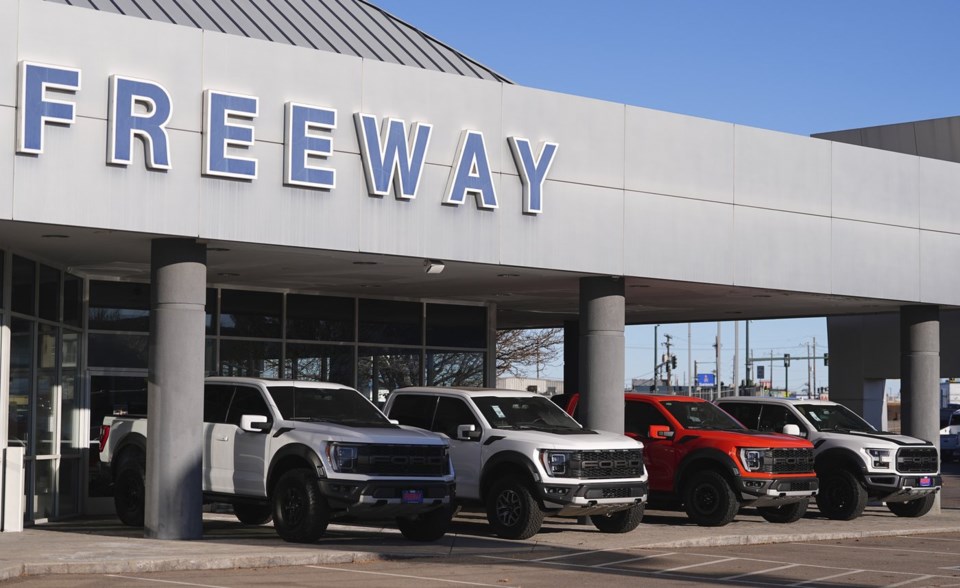Buying a new car has never been more financially daunting. A 2025 analysis from Edmunds found that a record 19.3% of consumers who financed a new vehicle in the second quarter of 2025 committed to a monthly payment of $1,000 or more. That’s nearly one in five buyers taking on what was once considered an extreme car payment — driven by high interest rates and rising vehicle prices.
While it might be tempting to stretch your budget for the car you want, locking yourself into a high-cost loan can be a painful mistake. Before you sign, here are five common car-buying missteps to avoid.
Buying a car you can’t (or shouldn’t) really afford
There’s a difference between being able to buy something and being able to afford it wisely. With an average new vehicle transaction price of approximately $49,000, many buyers are truly stretching their budgets. It’s not uncommon to see buyers opt for extended 72-month or 84-month financing terms.
That shiny SUV might seem within reach thanks to flexible financing, but the long-term hit to your financial health could be considerable. Buying within your means — ideally targeting a loan term of no more than 60 months and keeping your car-related expenses under 15%-20% of your monthly take-home pay — is smart shopping in an era of rising interest rates and ever-increasing car prices.
Not shopping around for a loan
One of the most costly and common mistakes car buyers make is waiting until they’re sitting in the dealership finance office to think about a loan. Dealerships may offer convenience, but their financing may include marked-up interest rates or hidden fees.
Instead, walk into the dealership with a preapproved loan offer from your bank, credit union or an online lender. According to the Consumer Financial Protection Bureau, this move can save buyers hundreds to thousands of dollars over the life of the loan. When you do this, the dealer can still try to beat the rate — and sometimes will. But now you’re negotiating from a position of strength, not desperation.
Rolling negative equity into a new car loan
If you owe more on your current car than it’s worth — a situation known as negative equity — trading it in for a new vehicle can be a financial landmine. This commonly happens when people take out a six-year loan, trade in the vehicle after just three or four years, and carry the previous balance into the new vehicle. Rolling that deficit into a new loan just worsens the problem, guaranteeing that you’ll be underwater for even longer.
According to Edmunds, 28.2% of trade-ins in July 2025 involved negative equity, and the average amount buyers owed above the vehicle’s value was $6,902. That sets the stage for a vicious cycle, especially if buyers trade cars frequently or face unexpected job loss or repair costs. If you’re in this situation, consider keeping your car longer or making extra payments. If you can get a better rate, even refinancing can get you back to breakeven.
Skipping the internet sales departmentMost major dealerships now have dedicated internet sales teams that exist to sell you a car quickly and often at better prices than you’ll get face-to-face. If you already know what make, model and trim you want, you can save hours — and hundreds or even thousands of dollars — by working with the internet sales department instead of walking onto the lot.
Sites such as Edmunds can help you compare pricing between multiple dealers, and many will show you real-time inventory, rebates and incentives. This lets you shop from the comfort of home and make dealers compete for your business. It also gives you a written quote you can bring with you — a powerful tool when negotiating.
Overlooking used alternatives
Buying new is tempting — it smells great, it’s under warranty, and no one else has touched it. But it’s not always the smartest financial move. Today’s certified pre-owned vehicles often come with extended factory warranties, undergo rigorous inspections, and cost thousands less than their new counterparts. The rapid depreciation of most new vehicles only worsens the picture. Most lose 20%–30% of their value in the first year alone, according to Edmunds. Avoiding that depreciation hit can save thousands.
Edmunds says
Buying a new car is one of the biggest financial decisions most people make — second only to purchasing a home. Avoiding these five common mistakes won’t just save you money — it has the potential to help ensure your long-term financial security. Take your time and do your homework. The right deal isn’t just about the car — it’s about the life you want to live after you drive it off the lot.
____
This story was provided to The Associated Press by the automotive website Edmunds. Josh Jacquot is a contributor at Edmunds.
Josh Jacquot, The Associated Press



